Jun 3, 2013 | coins, legislative, policy
H.R. 1905: Mother’s Day Centennial Commemorative Coin Act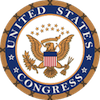
Sponsor: Rep. David McKinley (R-WV)
• Introduced: May 9, 2013
• Referred to the House Committee on Financial Services
Track this bill at http://www.govtrack.us/congress/bills/113/hr1905
H.R. 1071: To specify the size of the precious-metal blanks that will be used in the production of the National Baseball Hall of Fame commemorative coins.
Sponsor: Rep. Richard Hanna (R-NY)
• This bill is a technical change to the National Baseball Hall of Fame Commemorative Coin Act.
• Signed by the President on May 17, 213
• This bill became Public Law 113-10
See the information about this bill at http://www.govtrack.us/congress/bills/113/hr1071
S. 1011: Boys Town Centennial Commemorative Coin Act
Sponsor: Sen. Mike Johanns (R-NE)
• A bill to require the Secretary of the Treasury to mint coins in commemoration of the centennial of Boys Town
• Introduced: May 22, 2013
• Referred to the Senate Committee on Finance
Track this bill at http://www.govtrack.us/congress/bills/113/s1011
May 3, 2013 | coins, legislative, policy
S. 768: Sound Money Promotion Act
 Sponsor: Sen. Mike Lee (R-UT)
Sponsor: Sen. Mike Lee (R-UT)
• A bill to treat gold and silver coins used as legal tender in the same manner as United States currency for taxation purposes.
• Introduced: April 18, 2013
• Referred to the Senate Committee on Finance
Track this bill at http://www.govtrack.us/congress/bills/113/s768
H.R. 1653: Pro Football Hall of Fame Commemorative Coin Act
Sponsor: Rep. James Renacci (R-OH)
• Introduced: April 18, 2013
• Referred to the House Committee on Financial Services.
Track this bill at http://www.govtrack.us/congress/bills/113/hr1653
H.R. 1719: Cents and Sensibility Act
Sponsor: Rep. Steve Stivers (R-OH)
• To amend title 31, United States Code, to save the American taxpayers money by immediately altering the metallic composition of the one-cent, five-cent, dime, and quarter dollar coins, and for other purposes.
• Introduced: April 24, 2013
• Referred to the House Committee on Financial Services.
Track this bill at http://www.govtrack.us/congress/bills/113/hr1719
Apr 23, 2013 | ancient, coins, ethics, foreign, history, news, policy
While the State Department’s Cultural Advisory Committee (CPAC) continues to kowtow the the whims of foreign government looking to use the Convention on Cultural Property Implementation Act (CPIA; 19 U.S.C. §§ 2601 et seq.) as some sort of virtual tool to attack the United States, little seems to be said by the foreign archeological supporters when a Paris court ruled for a French auction house allowing them to sell Native American artifacts.
The case involves the sale of 70 artifacts from Arizona’s Hopi Tribe by the Paris auction house Néret-Minet. Hopi tribe members and historians believe that the items were illegally obtained. Representatives from Néret-Minet claim that the items were purchased legally from a collector in the United States.
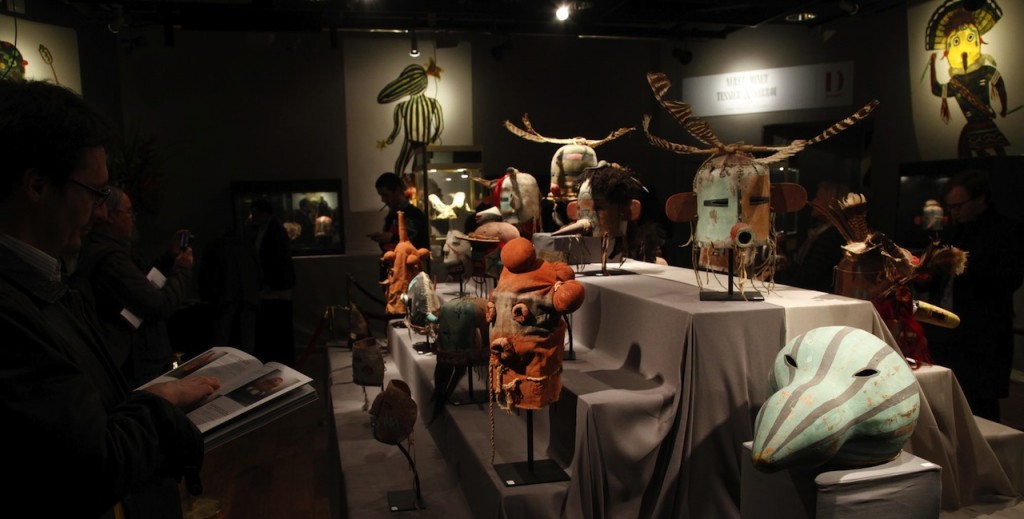
A visitor looks at antique tribal masks revered as sacred ritual artifacts by a Native American tribe in Arizona which are displayed at an auction house in Paris April 11, 2013. (REUTERS/John Schults)
Following the ruling, Néret-Minet went ahead with the auction. According to The New York Times, the auction generated $1.2 million in sales (with buyer’s premiums). Five of the 70 items did not sell and not sold for less than their estimated value.
According to The New York Times:
Before starting, the auctioneer, Gilles Néret-Minet, told the crowd that the sale had been found by a judge to be perfectly legal, and that the objects were no longer sacred but had become “important works of art.” He added, “In France you cannot just up and seize the property of a person that is lawfully his.”
So let me get this straight, religious objects that are allegedly protected by the same treaties as ancient coins and United States law can be sold as “art objects” while foreign governments confront a dealer on a bourse floor while the State Department does little to protect collectors and those who have legitimate claims?
If France can do this with items of religious and cultural significance to the Hopi tribe, then will happen to the coin collecting hobby? I know some people can take their hobby seriously, but it is not religion. Most countries already have examples of the coins in question, so why are additional examples “culturally significant.” Remember, it was reported that when a dealer was approached in Baltimore by representatives of a foreign government, they were only interested in the more expensive coins and not the common coins from the same country with a lesser value.
The State Department is not doing enough to protect the American people, whether it is to protect what is really culturally significant items like the artifacts from the Hopi tribe or the abuse of international law as demonstrated by the actions of the State Department’s CPAC and the confrontation in Baltimore. This is something that must be addressed by the president!
Please take action!
I renew my request that all of my readers to go to http://wh.gov/MD2O and sign the petition. Share it on social media. I made it easy—just see the widget at the top of the right column. Petitions require 100,000 signatures in order to be answered by the White House. So far there are five signatures (THANK YOU!). Let’s see if we can motivate the coin collecting community to add more before you will not be able to own any foreign coin older than 100 years old!

A French supporter of the Indian cause, who refused to give his name, left, holds a flag of the American Indian Movement and an American exchange student, member of the Arizona’s Hopi tribe, Bo Lomahquahu, right, stand outside of the Druout’s auction house to protest the auction of Native American Hopi tribe masks in Paris, Friday, April 12, 2013. A contested auction of dozens of Native American tribal masks went ahead Friday afternoon following a Paris court ruling, in spite of appeals for a delay by the Hopi tribe, its supporters including actor Robert Redford, and the U.S. government. (AP Photo/Michel Euler)
Apr 8, 2013 | coins, commentary, foreign, policy
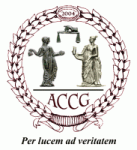 In a test lawsuit filed by the Ancient Coin Collectors Guild (ACCG), the group sued the federal government over the granting of import restrictions and confiscation of coins that foreign government have declared cultural property. The suit filed by ACCG challenges recent Memorandum of Understanding (MOU) between the State Department and the cultural regulators of Cypress and China under the Convention on Cultural Property. On March 25, 2013, the case that ACCG appealed to the Supreme Court was denied a hearing (petition for certiorari).
In a test lawsuit filed by the Ancient Coin Collectors Guild (ACCG), the group sued the federal government over the granting of import restrictions and confiscation of coins that foreign government have declared cultural property. The suit filed by ACCG challenges recent Memorandum of Understanding (MOU) between the State Department and the cultural regulators of Cypress and China under the Convention on Cultural Property. On March 25, 2013, the case that ACCG appealed to the Supreme Court was denied a hearing (petition for certiorari).
Over the last few years, the Coin Collectors Blog has asked readers to sign various petitions and write to the Department of State to stop restrictions on ancient coins. To understand why this is necessary, we have to understand why this is happening.
For a country to request import restrictions and confiscation of cultural property, they are required to send a letter to the State Department asking the United States to enter into an MOU to restrict the import and export of what the asking country considers cultural property as defined by the Convention on the Means of Prohibiting and Preventing the Illicit Import, Export and Transfer of Ownership of Cultural Property 1970, often called the 1970 UNESCO Convention. The purpose of the the treaty was to stop archaeological pillaging and trafficking in cultural property. In other words, it would significantly hamper the career of Indiana Jones.

EID·MAR silver coin commemorating the death of Cæsar on March 15
Under the Convention on Cultural Property Implementation Act (CPIA; 19 U.S.C. §§ 2601 et seq.), the law passed by congress upon the Senate’s ratification of the treaty in 1983, requests are reviewed by the Cultural Property Advisory Committee (CPAC) in the State Department’s Bureau of Educational and Cultural Affairs. The CPAC authors the MOU based on the input from the requesting country and publishes the results for public comment. By law, the public has 30 days to provide comments on the proposed MOU. However, it appears that it is very rare that the CPAC makes any changes after the end of the comment period.
The MOU undergoes whatever department review is required and then is signed by the Secretary of State on behalf of the president and made part of the policy and rule provisions granted to the Executive Branch by congress (as part of the CPIA).
The original case was filed in a Fourth Circuit Federal Court in Baltimore. In its suit, ACCG claims that the rules agreed to the by CPAC are arbitrary and made by a panel that does not understand how their decisions affect coin collectors. Even though the intent has not to work against ancient coin collectors, governments have used the law to restrict the export of newly discovered ancient to the United States. The court ruled that it did not have standing to change the law since there is no constitutional question. The appellate division of the Fourth Circuit in Richmond confirmed this ruling in October 2012.
ACCG appealed the ruling to the Supreme Court. On March 25, the court denied the ACCG’s petition for hearing. The Supreme Court’s action means that the result of the test case is only binding in the Fourth Circuit (Maryland, North Carolina, South Carolina, Virginia, and West Virginia). In other words, someone has to have been harmed by the results of the law before the courts will agree to hear a case.
Last month, Patrick Heller wrote in Numismatic News that he spoke with a dealer “who had been visited by representatives of a foreign government seeking to confiscate the valuable ancient coins issued by that nation if the dealer could not provide a chain of custody proving that the coins were legally owned before that nation banned the export of ‘national treasures.’” Heller said that the representative were only interested in the more expensive coins and not the common coins from the same country but whose value was much less.
While these issues have mostly affected ancient coin dealers and collectors, some countries have attempted to petition the United States government to make the cut-off date of what is considered cultural property for coins later. In one case, China has suggested that coins from as late as the Qing Dynasty (1644-1912) should be considered cultural property but has not petitioned the CPAC for an update to their MOU with the United States. The problem is that these countries have been trying to exercise their “authority” under the 1970 convention putting U.S. dealers and collectors at disadvantage with the rest of world for political reasons.
If the State Department’s CPAC will not work on behalf of the American people, then collectors must stand up and tell the Obama administration it is time to stop. In fact, I created a petition at the White House website. This petition reads as follows:
we petition the obama administration to:
Protect coin collectors from countries using cultural property to prevent the fair trade of ancient rare coins
Using the Convention on Cultural Property Implementation Act, foreign countries have been asking the State Department’s Cultural Property Advisory Committee to update Memoranda of Understand in such a way that could harm the ancient coin collecting in the United States by declaring coins “Cultural Property” under the 1970 UNESCO convention. The problem is that these countries are only asking the US for restrictions.
In a recent case, a dealer was confronted at a coin show by foreign officials seeking to confiscate expensive ancient coins under a loose interpretation of the law. This is going to harm the small business coin dealers involved.
We the undersigned ask the administration to end the restrictions on the buying and selling of foreign coins mistakenly included in these acts.
Please take action!
I ask all of my readers to go to http://wh.gov/MD2O and sign the petition. And share it on social media. Petitions require 100,000 signatures in order to be answered by the White House. So far there is one signature (mine). Let’s see if we can motivate the coin collecting community to add more before you will not be able to own any foreign coin older than 100 years old!
Logo courtesy of the Ancient Coin Collectors Guild.
Image of the Eid Mar silver coin courtesy of dig4coins.com.
Apr 1, 2013 | coins, legislative, policy
H.R. 1071: To specify the size of the precious-metal blanks that will be used in the production of the National Baseball Hall of Fame commemorative coins.
Sponsor: Richard Hanna (R-NY)
• Introduced: March 12, 2013
• Referred to the House Financial Services Committee on March 12, 2013
Track this bill at http://www.govtrack.us/congress/bills/113/hr1071
H.R. 1218: Commemorative Coins Reform Act of 2013
Sponsor: Rep. Justin Amash (R-MI)
• To prohibit the payment of surcharges for commemorative coin programs to private organizations or entities
• Introduced: March 15, 2013
• Referred to the House Financial Services Committee on March 15, 2013
Track this bill at http://www.govtrack.us/congress/bills/113/hr1218
Mar 7, 2013 | coins, legislative, policy

Bibiana Boerio nomination to be the Director of the U.S. Mint was returned by the Senate.
President Obama has the option of resubmitting any nominations. Thus far, the president has not re-sent Boerio or any other nomination for Director of the U.S. Mint to the Senate for confirmation during the 113th congress.
The U.S. Mint has been without a permanent director since the resignation of Edmund Moy in January 2011. Since his resignation, the U.S. Mint has been lead by the Treasurer of the United States Rosie Rios with day-to-day operations being lead by Deputy Director Richard A. Peterson as Acting Director.
Image courtesy of the Pittsburgh Post-Gazette.
Mar 6, 2013 | bullion, coins, gold, platinum, policy, US Mint
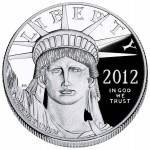 It was reported in the numismatic press but not formally announced by the U.S. Mint that they filed a notice that appeared in the Federal Register (78 FR 11954) raising precious metal prices. The new prices, which are as much as 30-percent higher than the previous became effective as of noon (ET) on Wednesday, February 27, 2013.
It was reported in the numismatic press but not formally announced by the U.S. Mint that they filed a notice that appeared in the Federal Register (78 FR 11954) raising precious metal prices. The new prices, which are as much as 30-percent higher than the previous became effective as of noon (ET) on Wednesday, February 27, 2013.
It was noted in the U.S. Mint’s annual report that seigniorage on precious metal products were lower in 2012 than in years past. This move appears that the U.S. Mint is trying to make up for that lost revenue.
The announcement can be found at the Government Printing Office website ![[PDF]](http://coinsblog.ws/library/images/pdf.png) or you can find a printable version at on the U.S. Mint’s website.
or you can find a printable version at on the U.S. Mint’s website. ![[PDF]](http://coinsblog.ws/library/images/pdf.png)
Coin image courtesy of the U.S. Mint.
Mar 5, 2013 | coins, legislative, policy
This month’s list includes one late entry that was missed from January.
S. 203: Pro Football Hall of Fame Commemorative Coin Act
A bill to require the Secretary of the Treasury to mint coins in recognition and celebration of the Pro Football Hall of Fame.
Sponsor: Sen. Robert “Rob” Portman (R-OH)
• Introduced on January 31, 2013
• Senate Banking, Housing, and Urban Affairs Committee on January 31, 2013
Track this bill at http://www.govtrack.us/congress/bills/113/s203
H.R. 627: National Park Service 100th Anniversary Commemorative Coin Act
Sponsor: Rep. Erik Paulsen (R-MN)
To provide for the issuance of coins to commemorate the 100th anniversary of the establishment of the National Park Service, and for other purposes.
• Introduced: February 13, 2013
• Referred to the House Financial Services Committee on February 13, 2013
Track this bill at
Feb 27, 2013 | coins, currency, fun, policy
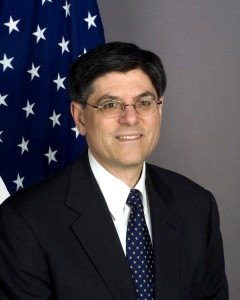
The 75th Secretary of the Treasury Jacob “Jack” Lew
The White House release a statement from the president following the confirmation of his former Chief of Staff saying “here is no one more qualified for this position than Jack.”
Aside from being in charge of the department that includes the U.S. Mint and the Bureau of Engraving and Printing, currency collectors now get to look forward to the addition of Lew’s “Lewpty” autograph on United States currency. When Lew was nominated to succeed Tim Geithner, it was joked that Lew’s autograph resembled a series of loops or the icing decoration on the Hostess Cupcake. There was even a petition on the White House website to “Save the Lewpty-Lew” autograph on U.S. currency (the petition ended and can no longer be found on the White House’s website).
Given the realities of the Treasury and our current economics, we wish Jack Lew well in his new position. We also hope he does not follow through on the promise he told Sen. Max Baucus (D-Montana) he made to the president “to make at least one letter legible.”
Please Mr. Secretary, Save the Lewpty Lew!
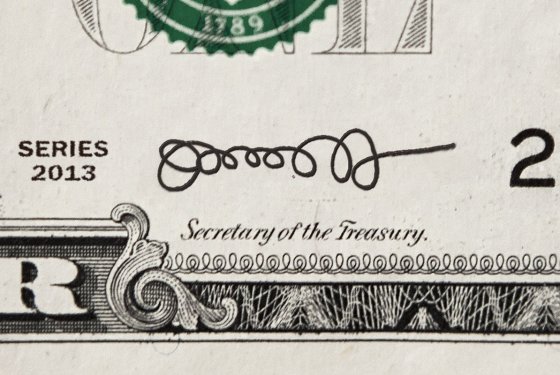
A mock-up of what Jack Lew’s signature would look like on a one-dollar note
Credits
- Picture of Jack Lew courtesy of Wikipedia.
- Dollar Bill mock-up with Lew’s Loops courtesy of New York Magazine.
Feb 5, 2013 | coins, legislative, policy
The 113th congress was gaveled into session at noon on January 3, 2013 as required by the U.S. Constitution. First meeting of the new congress are largely procedural that includes giving the oath of office to anyone that was elected (the entire House of Representatives and one-third of the Senate) and electing leaders. Congress began their legislative calendar on January 4.
H.R. 77: Free Competition in Currency Act of 2013
To repeal the legal tender laws, to prohibit taxation on certain coins and bullion, and to repeal superfluous sections related to coinage.
Sponsor: Rep. Paul Broun Jr. (R-GA)
• Introduced on January 3, 2013
• Referred to the Financial Services, Ways and Means, and the Judiciary Committees on January 3, 2013
Track this bill at http://www.govtrack.us/congress/bills/113/hr77
H.R. 220: Stop the Coin Act
To limit the face value of coins that the Secretary of the Treasury may issue.
Sponsor: Rep. Greg Walden (R-OR)
• Introduced on January 14, 2013
• Referred to the House Committee on Financial Services on January 14, 2013
Track this bill at http://www.govtrack.us/congress/bills/113/hr220
S. 94: To terminate the $1 presidential coin program
Sponsor: Sen. David Vitter (R-LA)
• Introduced on January 23, 2013
• Referred to the Senate Committee on Banking, Housing, and Urban Affairs on January 23, 2013
Track this bill at http://www.govtrack.us/congress/bills/113/s94






 It was reported in the numismatic press but not formally announced by the
It was reported in the numismatic press but not formally announced by the ![[PDF]](http://coinsblog.ws/library/images/pdf.png) or you can find a printable version at on the
or you can find a printable version at on the 

